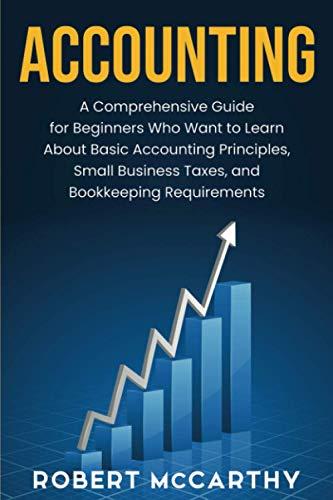Question
MULTIPLE CHOICE please i need help with all of the questions 1. The Internal Revenue Code regulates transfer pricing in the United States by encouraging
MULTIPLE CHOICE please i need help with all of the questions
1. The Internal Revenue Code regulates transfer pricing in the United States by encouraging the use of a transfer price that
| a. | reflects what the price would have been if the underlying transaction was between unrelated parties. |
| b. | shifts all income to the United States based company. |
| c. | maximizes parent taxable income regardless of where the parent corporation is incorporated. |
| d. | shifts all income to the highest income tax jurisdiction. |
OBJ: 9-10
2. A manufacturer produced a good with a value of 250, the retailer added 125 to the value of the good. Assuming the value added tax rate is 15% the net value added tax due to the government by the retailer is
| a. | 37.50 |
| b. | 18.75 |
| c. | 56.25 |
| d. | 0 |
OBJ: 9-10
3. A manufacturer produced a good with a value of 300, the retailer added 140 to the value of the good. Assuming the value added tax rate is 10% the final price to the consumer would be
| a. | 470 |
| b. | 484 |
| c. | 517 |
| d. | 454 |
OBJ: 9-10
4. Parent Corporation is located in a country with an income tax rate of 40%. Subsidiary Company is located in a country with an income tax rate of 25%. The best tax strategy for the enterprise would be to set the transfer prices on sales of goods from the subsidiary to the parent at a price that is
| a. | higher than the price that would be in effect for unrelated parties in an arms length transaction. |
| b. | lower than the price that would be in effect for unrelated parties in an arms length transaction. |
| c. | equal to the price that would be in effect for unrelated parties in an arms length transaction. |
| d. | transfer prices do not affect overall tax paid. |
OBJ: 9-10
5. The International Accounting Standards Board (IASB) works to formulate international accounting standards that are adopted by each country
| a. | when approved by the IASB. |
| b. | when accepted by the majority of IASB member countries. |
| c. | on a voluntary basis. |
| d. | only after acceptance by 2/3 of IASB member countries. |
OBJ: 9-9
6. The main difference between U.S. accounting standards and international accounting standards when accounting for plant, property and equipment is
| a. | international accounting standards require the use of current fair value with changes recognized in equity only. |
| b. | U.S. accounting standards do not allow the write-down of assets due to impairment. |
| c. | international accounting standards allow plant, property and equipment to be stated at current fair value with changes recognized in income or equity. |
| d. | U.S. accounting standards allow plant, property and equipment to be stated at current fair value with changes recognized in income or equity. |
OBJ: 9-9
7. Which of the following statements best differentiates multinational firms from domestic firms?
| a. | Multinational firms have overseas sales offices. |
| b. | Multinationals engage in both importing and exporting. |
| c. | Multinational firms have one or more plant(s) in a foreign country. |
| d. | Multinational business people make use of worldwide sales, capital, and labor markets. |
OBJ: 9-1
8. Which of the following factors has NOT influenced the development of accounting practices in various nations?
| a. | the political environment |
| b. | economic development |
| c. | cultural background |
| d. | all of these factors have influenced the development of accounting practices |
OBJ: 9-4
9. Which of the following accounting areas is NOT significantly affected by international activity?
| a. | overhead allocation |
| b. | recognition principles |
| c. | auditing standards |
| d. | all are significantly affected |
OBJ: 9-3
10. Why would a U.S. manufacturing firm select a foreign site for one of its plants?
| a. | The site is closer to the product market area |
| b. | Labor costs are more favorable |
| c. | The foreign country's tax environment is more attractive |
| d. | All of these factors could influence a firm's decision to manufacture overseas. |
OBJ: Introduction| 9-1
Step by Step Solution
There are 3 Steps involved in it
Step: 1

Get Instant Access to Expert-Tailored Solutions
See step-by-step solutions with expert insights and AI powered tools for academic success
Step: 2

Step: 3

Ace Your Homework with AI
Get the answers you need in no time with our AI-driven, step-by-step assistance
Get Started


